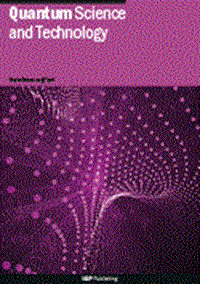Integer programming using a single atom
IF 5.6
2区 物理与天体物理
Q1 PHYSICS, MULTIDISCIPLINARY
引用次数: 0
Abstract
Integer programming (IP), as the name suggests is an integer-variable-based approach commonly used to formulate real-world optimization problems with constraints. Currently, quantum algorithms reformulate the IP into an unconstrained form through the use of binary variables, which is an indirect and resource-consuming way of solving it. We develop an algorithm that maps and solves an IP problem in its original form to any quantum system possessing a large number of accessible internal degrees of freedom that are controlled with sufficient accuracy. This work leverages the principle of superposition to solve the optimization problem. Using a single Rydberg atom as an example, we associate the integer values to electronic states belonging to different manifolds and implement a selective superposition of different states to solve the full IP problem. The optimal solution is found within a few microseconds for prototypical IP problems with up to eight variables and four constraints. This also includes non-linear IP problems, which are usually harder to solve with classical algorithms when compared to their linear counterparts. Our algorithm for solving IP is benchmarked by a well-known classical algorithm (branch and bound) in terms of the number of steps needed for convergence to the solution. This approach carries the potential to improve the solutions obtained for larger-size problems using hybrid quantum–classical algorithms.使用单原子的整数编程
整数编程(IP),顾名思义,是一种基于整数变量的方法,常用于制定现实世界中带有约束条件的优化问题。目前,量子算法通过使用二进制变量将 IP 重构为无约束形式,这是一种间接且耗费资源的求解方式。我们开发了一种算法,可以将 IP 问题以其原始形式映射到任何拥有大量可访问内部自由度且控制精度足够高的量子系统中并加以解决。这项工作利用叠加原理来解决优化问题。以单个雷德贝格原子为例,我们将整数值与属于不同流形的电子状态相关联,并实现了不同状态的选择性叠加,从而解决了完整的 IP 问题。对于多达八个变量和四个约束条件的原型 IP 问题,我们能在几微秒内找到最优解。这也包括非线性 IP 问题,与线性问题相比,这些问题通常更难通过经典算法解决。我们的 IP 求解算法以著名的经典算法(分支与约束)为基准,计算收敛到解所需的步骤数。这种方法有可能改进使用量子-经典混合算法求解更大问题的方法。
本文章由计算机程序翻译,如有差异,请以英文原文为准。
求助全文
约1分钟内获得全文
求助全文
来源期刊

Quantum Science and Technology
Materials Science-Materials Science (miscellaneous)
CiteScore
11.20
自引率
3.00%
发文量
133
期刊介绍:
Driven by advances in technology and experimental capability, the last decade has seen the emergence of quantum technology: a new praxis for controlling the quantum world. It is now possible to engineer complex, multi-component systems that merge the once distinct fields of quantum optics and condensed matter physics.
Quantum Science and Technology is a new multidisciplinary, electronic-only journal, devoted to publishing research of the highest quality and impact covering theoretical and experimental advances in the fundamental science and application of all quantum-enabled technologies.
 求助内容:
求助内容: 应助结果提醒方式:
应助结果提醒方式:


